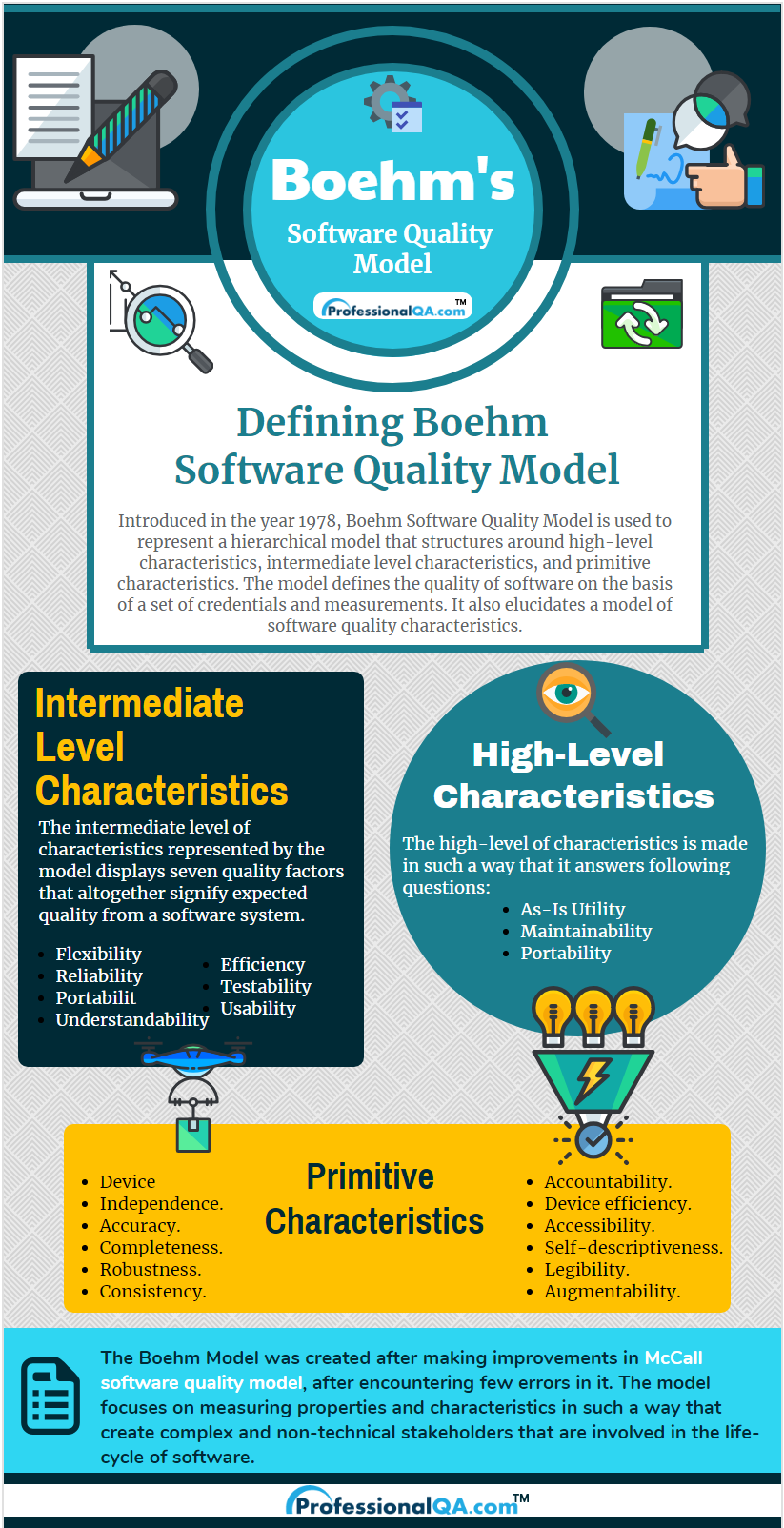

Software Quality is defined to be a combination of features and functions of a product or service that determines the capability of software in order to satisfy the needs and requirements of software.
The three commonly known quality models are as follows:
Boehm software quality model was introduced in the year of 1978. The model is used to represent a hierarchical model that structures around high level characteristics, intermediate level characteristics, and primitive characteristics. All of these together results in to establishment of a high quality software model.
The model defines the quality of software on the basis of a set of credentials and measurements. It is also elucidates a model of software quality characteristics. The high level of characteristics is made in such a way that answers following questions:
The intermediate level of characteristics represented by the model displays seven quality factors that altogether signify expected quality from a software system. These are as follows:
The factors can result into creation of other measurable properties. These are as follows:
The Boehm Model was created after doing improvements in McCall software quality model encountered few errors in it. This new model of Boehm was found to be more interesting as it is placed in hierarchical order. The order begins with addressing the major concerns of the end-users. On the contrary, the bottom of the hierarchy displays the technically inclined personnel.
The model focuses on measuring properties and characteristics in such a way that create complex and non-technical stakeholders that are involved in the life-cycle of software. As compared to McCall model, this model is used in a widespread manner because of its bottom to top approach of software quality.

Even though this "software quality model" overcomes the shortcomings of various olden software quality models and as it provides a basic amount of support by following a top down approach to quality of software, this model is also short-lived as far as a solid "software quality testing"is expected to be.
Advertisement: